Spanish Food Feature - Sydney, Perth
Spanish food is taking the world by storm, one small plate at a time...
Spanish food is as varied and diverse as it's many unique geographic regions. Despite such diversity, there are a number of key ingredients that are common across most of Spain, although the way those ingredients are used can vary from region to region.
Inspired by what appears to be a Tapas lead wave of interest in Spanish food, this feature takes a look at some of the more important components of this great cuisine and where to find them locally.
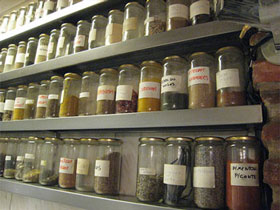
Paella
Perhaps the most famous of all Spanish dishes is paella, a spicy rice dish originating in Valencia but now popular across Spain and most of the world. Traditionally, paella is cooked in a special wide, shallow pan, over an open fire. When cooked properly, paella has a rich golden crust, known as the socarrat, on the bottom.
Paella must be cooked with a short grain rice such as Calasparra that absorbs liquid well during the cooking process whilst still retaining it's bite. The ingredients of paella can vary, but will normally highlight seafood, meat or vegetables. Peppers or capsicum along with saffron are probably essential to any good paella.
Paella Tips: 1. Use a proper paella pan 2. Use a short grain rice 3. Cook over an open flame 4. Spice with saffron 5. Paella recipes
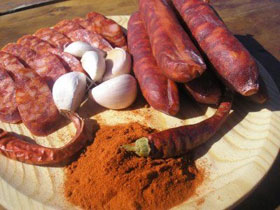
Tapas
Nothing is doing more to popularise Spanish food these days than Tapas. It seems not a week goes by without another Tapas bar opening somewhere or other. Unfortunately, the quality of Tapas being served can vary widely, from exceptional to very poor. Tapas is clearly best enjoyed in a bar environment, with a glass of cold beer, complimentary wine or, more traditionally, sherry.
There doesn't seem to be any set rules or guidelines as to what constitutes an authentic Tapas dish. What is probably more important is how the food is served, and the composition of the overall Tapas menu.
Designing your own "flow" of dishes is after all a key factor in the enjoyment of Tapas. No Tapas menu would be complete without including the Spanish food staples jamón, olives and chorizo, all of which are now readily available across Australia (both locally produced and imported from Spain).
Tapas Tips: 1. Food served on small plates isn't always Tapas. Look for the total Tapas experience - ambience, buzz and food authenticity. 2. Put together your own Tapas dishes at home with just a quick visit to a Spanish deli in your city.
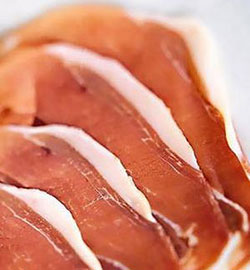
Jamón
Jamón is dry-cured Spanish ham. The Spaniards are crazy about Jamón and it can be eaten as part of almost every meal. There is a well defined Jamón quality pecking order which is largely determined by the type of pig from which it is made.
The very best quality is Jamón Ibérico made from generally acorn fed Iberian pigs, with perhaps the best of the best known as Pata Negra, made exclusively from black hoofed Iberian pigs (available for around $300 per kilogram). Jamón Serrano is a high quality ham (expect to pay around $300 per kilogram).
Chorizo
Mention Spanish food or Tapas and most people would immediately think of Chorizo, a sausage made from pork and flavoured with paprika. Chorizo is mostly cured before sale but can be also be bought fresh and is generally sliced and fried before cooking. Small fried slices of chorizo served with lemon is a classic Tapas dish, but chorizo can be served in many other ways including inclusion is stews and braises with other ingredients like chick peas and tomatoes.
Chorizo Tip: The more red in colour that a Chorizo sausage is, the hotter and spicier it is likely to be.
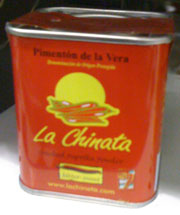
Paprika (Pimentón)
Paprika is made from ground, dried red chillie peppers and is one of the most essential ingredients in Spanish cooking. Depending upon the dish, either sweet or hot paprika will be used. Smoked paprika is also available, with the most common brand being La Chinata. Paprika is so important to Spanish food that it's production is strictly controlled within regulated Denominations of Origin (D.O.) across Spain.
Olive Oil
No introduction to Spanish food would be complete without some reference to olives and olive oil. Spain is the largest producer of olive oil in the world, and Andalucía in the south accounts for 75% of total Spanish production. Olive oil is a key ingredient in Spanish cooking and is included in almost every recipe.
There are various quality grades of Spanish olive oil with the best being Extra Virgin. Much like wine, the taste and colour of olive oil will vary depending on the type of olive used and other production factors.
Table olives are also a feature of Spanish cuisine. Pickled, often stuffed, olives will normally be offered on a good Tapas menu.
Olive Oil Tip: Buying Extra Virgin is definitely worth the expense, just use a little less to make up for the added cost.
Enjoying Spanish Food
Above all, Spanish food is simple and uncomplicated, relying on fresh regional ingredients and traditional cooking methods. And even in Australia, great Spanish food experiences don't necessarily need to be expensive.
To try arguably the best chorizo in Sydney, just visit the Mojo Picón stall at the Victoria Avenue markets in Chatswood every Thursday. When there, don't forget to also try their garlic prawns that are simply sizzled in Mojo Picón's own delicious paprika and garlic sauce. Truly, a little taste of Spain.
More Features:
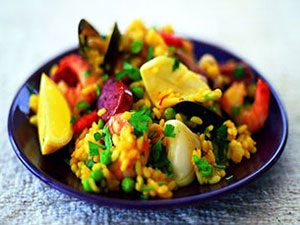
Spanish Food Directory:
Perth:
Sydney:
- Spanish Ingredients in Sydney
- Best Chorizo in Sydney
- Spanish Cookbooks in Sydney
- Spanish Restaurants in Sydney
- Tapas Bars in Sydney
